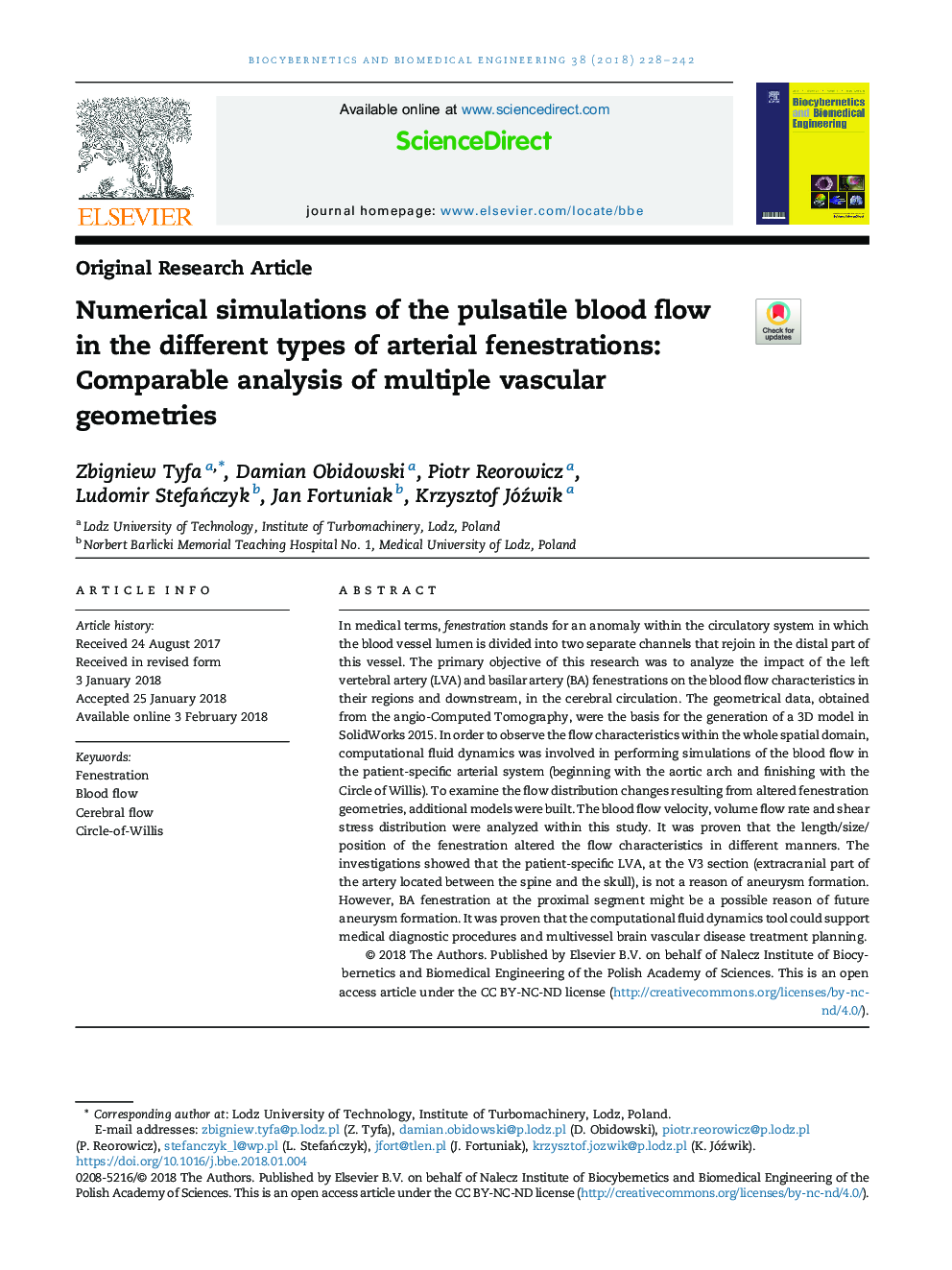| کد مقاله | کد نشریه | سال انتشار | مقاله انگلیسی | نسخه تمام متن |
|---|---|---|---|---|
| 6484162 | 1416073 | 2018 | 15 صفحه PDF | دانلود رایگان |
عنوان انگلیسی مقاله ISI
Numerical simulations of the pulsatile blood flow in the different types of arterial fenestrations: Comparable analysis of multiple vascular geometries
ترجمه فارسی عنوان
شبیه سازی عددی جریان خون پالسیتی در انواع مختلف جنبشی شریان: تجزیه و تحلیل قابل مقایسه از هندسه های عروقی متعدد
دانلود مقاله + سفارش ترجمه
دانلود مقاله ISI انگلیسی
رایگان برای ایرانیان
کلمات کلیدی
فیناستراسیون، جریان خون، جریان مغزی، دایره از ویلیس،
موضوعات مرتبط
مهندسی و علوم پایه
مهندسی شیمی
بیو مهندسی (مهندسی زیستی)
چکیده انگلیسی
In medical terms, fenestration stands for an anomaly within the circulatory system in which the blood vessel lumen is divided into two separate channels that rejoin in the distal part of this vessel. The primary objective of this research was to analyze the impact of the left vertebral artery (LVA) and basilar artery (BA) fenestrations on the blood flow characteristics in their regions and downstream, in the cerebral circulation. The geometrical data, obtained from the angio-Computed Tomography, were the basis for the generation of a 3D model in SolidWorks 2015. In order to observe the flow characteristics within the whole spatial domain, computational fluid dynamics was involved in performing simulations of the blood flow in the patient-specific arterial system (beginning with the aortic arch and finishing with the Circle of Willis). To examine the flow distribution changes resulting from altered fenestration geometries, additional models were built. The blood flow velocity, volume flow rate and shear stress distribution were analyzed within this study. It was proven that the length/size/position of the fenestration altered the flow characteristics in different manners. The investigations showed that the patient-specific LVA, at the V3 section (extracranial part of the artery located between the spine and the skull), is not a reason of aneurysm formation. However, BA fenestration at the proximal segment might be a possible reason of future aneurysm formation. It was proven that the computational fluid dynamics tool could support medical diagnostic procedures and multivessel brain vascular disease treatment planning.
ناشر
Database: Elsevier - ScienceDirect (ساینس دایرکت)
Journal: Biocybernetics and Biomedical Engineering - Volume 38, Issue 2, 2018, Pages 228-242
Journal: Biocybernetics and Biomedical Engineering - Volume 38, Issue 2, 2018, Pages 228-242
نویسندگان
Zbigniew Tyfa, Damian Obidowski, Piotr Reorowicz, Ludomir StefaÅczyk, Jan Fortuniak, Krzysztof Jóźwik,
